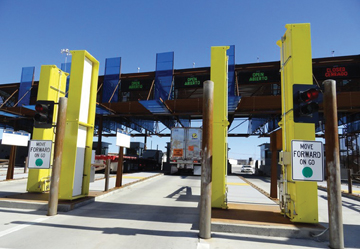“We can’t make as many runs, and we have to be more careful with hours and driver time, especially when loading can take half a day,” Garcia explains, adding, “We haven’t tried putting two drivers in a truck for longer routes yet, but to do that the freight rates would have to come up even more, and I’m not sure how many customers could bear it.”
“We tend to get truck teams with two guys,” comments Roberto Franzone, director of Arizona Sky Produce, Inc. in Nogales, who delivers up to its other location in Brampton, Toronto. “Nogales to Toronto is a fourth-morning delivery, or two days with two guys. The laws are there for a reason.”
Franzone said when he started in the business 20 years ago, a truck to Toronto was $2,000, and today the average is around $6,000 for the trip.
Fluctuating Fuel Rates
On the other hand, recent drops in fuel pricing may offset some of the increased freight rates and truck shortages that distributors and growers have experienced in recent years.
“Freight will probably stay the same or even go down a little due to the dropping price of fuel,” suggests Jerry Havel, director of sales and marketing at Fresh Farms, in Rio Rico. “I think we’re looking at a more stable year, and a lower fuel cost would be helpful.”
“Freight was rough last winter,” admits Ciruli. “Rates were very high. It’s hard to gauge ahead of time what the rates will be each year. But, in our favor this year,” he notes, echoing Havel’s remarks, “are weaker gas and diesel prices.”
Ciruli also mentions that extreme temperatures can impact fuel pricing and usage, and given last year’s Polar Vortex episodes in the Midwest and Eastern Seaboard, this year could have much of the same. If Buffalo, NY’s experience—seven feet of snow in some regions in mid-November—was any indication, it could be another wildly unpredictable winter.
Trending Commodities
Last year, nearly 5.5 billion pounds of produce crossed the border from Mexico into Nogales. Responding to increased demand, a number of growers expanded acreage of key commodities. Among the fruits and vegetables riding the surge in demand are oranges, up 295 percent to 51 million pounds; melons, up 78 percent to 657 million pounds; cantaloupe, up 52 percent to 39 million pounds; squash, up 23 percent to 447 million pounds; and cucumbers, up 14 percent to 587 million pounds. Exotic fruits and ethnic vegetables have also enjoyed climbing popularity, as well as a perennial favorite, tomatoes.
Ethnic and Specialty Items
“We have definitely seen increased interest in ethnic products, such as Asian eggplant, and specialty items such as bitter melon,” says Bennen. “With an increase in the immigrant population in the United States, we see future growth in this sector and have expanded our production of ethnic produce.”



